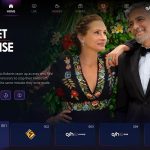Operators worldwide have recognised the need to build an OTT service, and have started down that road. Rodrigo Fernandes of Irdeto has some dos and don'ts for operators.

Operators worldwide have recognised the need to build an OTT service, and have started down that road. Rodrigo Fernandes of Irdeto has some dos and don’ts for operators
Many operators are rushing to roll out OTT platforms, or have already launched in-house engineered offerings to capture the wave of customers for whom OTT is the new normal but are these offerings actually well engineered enough to do the job? Informa expects revenue from pure OTT services to grow to $37 billion by 2017, and while the growth curve is steep, pure OTT revenue will likely reach just 10% of pay-TV revenue by the end of this decade. The MENA market itself is ripe for this level of investment, with a fourfold increase in mobile broadband subscriptions driving demand for OTT services.
Growing consumer demand is a great opportunity for operators to drive revenue, and established operators looking to create an OTT offering have a key advantage over new market entrants a deep knowledge of the customer base. A notable example is the opportunity for MENA operators to grow premium OTT services by beginning with lower ARPU content tailored for regional audiences, such as Arabic-language content for distribution across sub regions.
However, a properly thought-out OTT offering is a complex operation to put in place, posing a number of challenges to the operator during the creation of the service and on an ongoing basis as the proposition grows. In this piece, well look at the path operators must take to create a successful OTT offering, from creation to ongoing growth and maintenance.
Avoiding an OTT box office flop
To ensure a successful move from broadcast to OTT, there are three major pitfalls to avoid:
1. Setting up a separate OTT infrastructure
Broadcasters and operators moving into OTT may be tempted to look at setting up a separate infrastructure for the service. However, investing in a separate ecosystem is costly and involves duplication of effort (content ingestion, metadata management) and pressure on resources (staff, expertise, time).
Integration of infrastructure reduces overheads, increases alignment and allows the leveraging of content rights across both platforms, as many existing content licences already include extension to unmanaged devices. The final benefit is that operation of the two systems can be fully integrated through a set of unified operational UIs that simplify day-to-day workflows and manage devices and subscriptions transparently across both channels.
2. Missing out on easy options for mobile video
With the way consumer viewing habits have evolved, there are some quick-win options with existing subscribers that operators must not overlook before trying full OTT services. Research shows that a streaming service to mobile devices (as well as secondary STBs) is one of the most effective ways to improve subscriber satisfaction. Many operators can easily expand their existing TV services to stream content to mobile devices within the home, and even for download and go.
3. Getting the timing wrong
Timing is critical when moving from broadcast to OTT, as going too fast or slow can result in failure. On the one hand, waiting until all options are straightened out may lead to missing the OTT boat. On the other hand, underestimating the complexity makes rushing into proprietary solutions seem tempting, but can lead to technology lock-in that impedes future growth.
Creating a blockbuster offering
After going through the process of setting up an OTT offering, its important to monitor the service to identify when its time to scale up. While a home-grown approach may be ideal for start-up OTT services looking to manage a limited range of workflows, operators must be ready for the signs that a do-it-yourself approach is limiting growth.
Consider the following points to ensure that OTT offerings are robust enough to deal with market shifts and are able to provide the level of service to which customers have become accustomed:
1. How rapidly can my business accommodate shifting and emerging OTT technology needs?
For maximum reach, operators should adopt the latest in consumer technology, be that devices or browsers. On the business side, they should also be able to react to new video formats, metadata schemes and streaming technologies flexibility is key. Ideally, OTT vendors should be able to automatically support new digital rights management (DRM) types and streaming formats to their video content management system (CMS), relieving operators of any burden from integration. This is not the case with all vendors, so ask the right questions when forging long-term partnerships.
2. Is it taking too long for catch-up content to reach consumer devices?
With an advanced video content management system (CMS), content-preparation workflows can be triggered automatically according to rules based on metadata. Streamlining content preparation workflows can reduce time-to-screen for newly acquired or catch-up content by up to 40%.
3. How easy is it to implement an increasingly complex range of rights agreements with different availability windows and pricing plans that change over time?
Videos can be automatically de-activated when rights expire via an automated CMS. The same technology can intelligently manage categories to maximise lifetime content revenues by moving an episode between price plans at the right time.
In addition to having a robust OTT platform for the best reach and usability, operators must also have the flexibility to experiment and change offerings quickly to create a blockbuster service. Operators should look to test different content packages and pricing models such as providing cash and mobile payment options in MENA as every market is different and consumer demands shift rapidly. Even established OTT providers like Netflix constantly tweak their offers.
Sit back, relax and enjoy how QoS enriches customer experience
Alongside the business needs above, operators must be aware of the demand for reliability and quality of service from customers. Customers have little tolerance for slow delivery or viewing glitches, with anything less than a broadcast experience leaving them disappointed.
In order for video content to get to the end user, it has to jump through a number of hoops.
Typically for OTT delivery, the bottlenecks arise from the integration points between the multiple systems that process the content, including encoding/transcoding, packaging, encryption, storage [CDNs] and playout.
With any number of different data flows that the content can take, each OTT service needs to be carefully monitored to identify capacity bottlenecks and potential failure points. Operators must consistently ask themselves the following questions to stay on top of QoS and reliability:
Does my technology contain a single point of failure?
Is my technology managed by just a few highly skilled individuals?
Would it be difficult for my organisation if key individuals left suddenly?
Does my technology have video processing delays because no one is able to fix my solution?
Is my organisation missing documentation for the architecture and operations of its video preparation systems?
If the answer to any of these statements is yes, then operators should seriously consider if their OTT service has an appropriate level of support and resilience. Ideally, OTT services should be as robust as broadcast infrastructure, and should include 24/7 network monitoring to identify anomalies before they affect the end user.
Making a classic rather than a summer hit how OTT can work for you long-term
Flexibility is the key to making OTT work. Businesses in the MENA region and worldwide must be able to respond with equal speed to the roll-out of new technologies such as UHD, new devices used by consumers, and changes in consumption patterns. Crucially, OTT solutions must be able to grow with the business and follow the trends that emerge as the technology develops apace.
Expanding into OTT is a very important move, and hopefully this article is a helpful guide to operators and broadcasters looking at rolling out a service, as well as those wondering if they may have outgrown their DIY offerings. Competition for consumers time and money is not about to abate, and operators that evolve their offerings to suit new consumption methods can create personalised TV services that propel them into tremendous leadership positions.
Rodrigo Fernandes is Product Director Multiscreen at Irdeto.
















































































